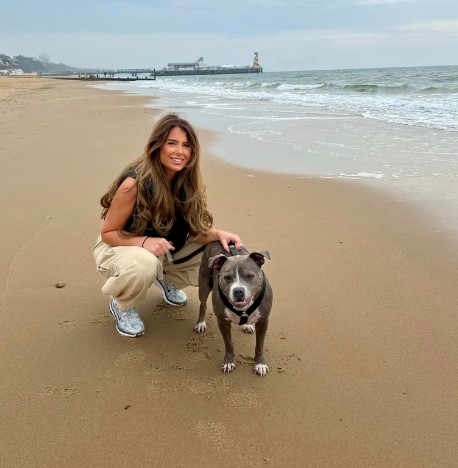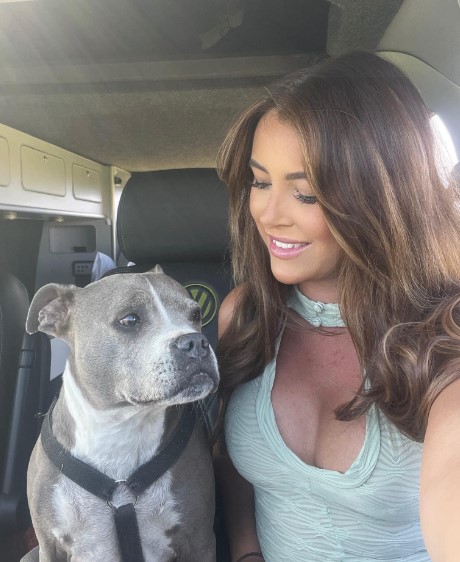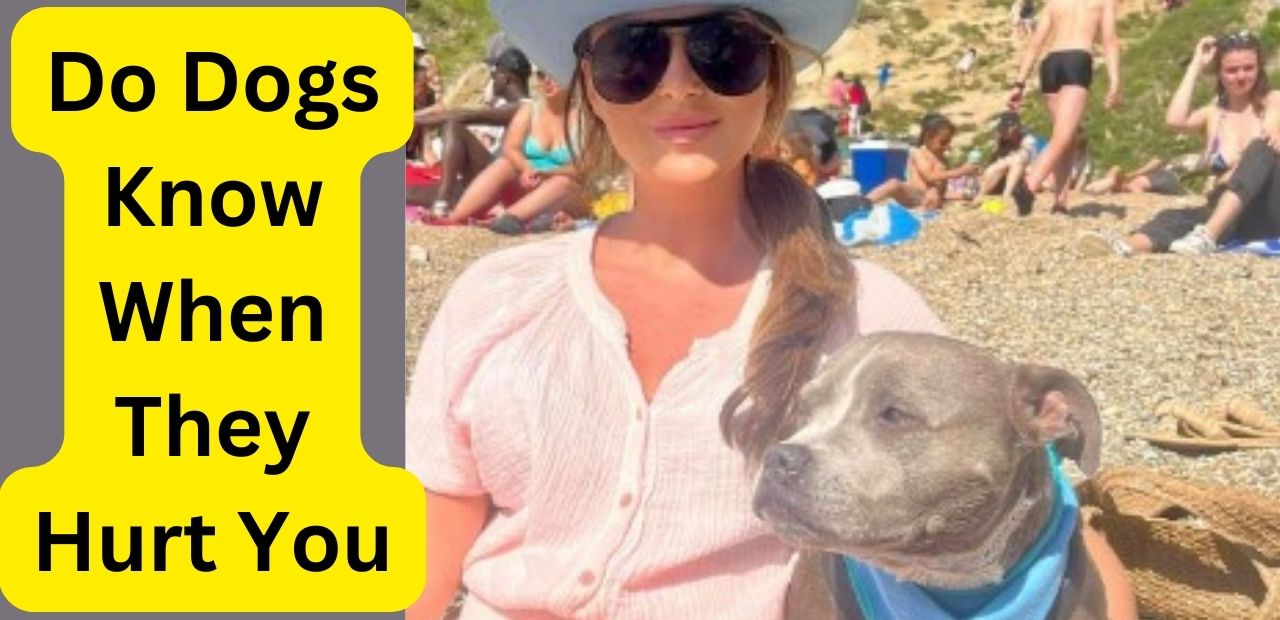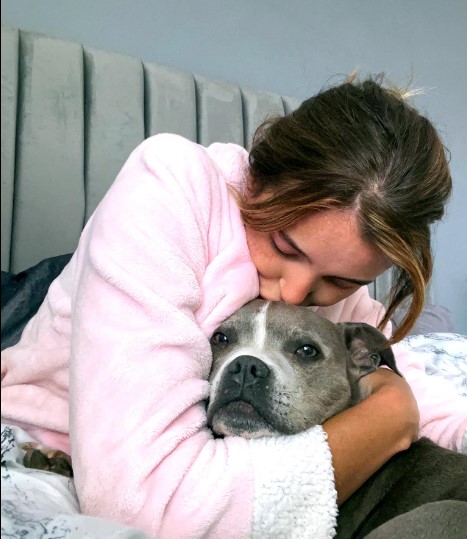Do you know when, Do Dogs Know When They Hurt You?Dogs can sense and recognize pain in humans through their behavior and reactions to injuries or distress. Dogs have a remarkable ability to sense and understand human emotions.
They can pick up on signs such as facial expressions, vocal cues, and body language, which help them gauge whether a person is hurt or in pain. Whether it’s a whimper, a worried glance, or an attempt to comfort, dogs exhibit empathy towards their human companions.
This ability comes from their keen observation skills and the strong bond they share with humans. In this article, we will delve into the fascinating topic of how dogs recognize when their owners are hurt and explore the various ways they show concern and support. So, if you’ve ever wondered if your furry friend truly knows when you’re hurting, read on to discover the signs and behaviors that reveal their empathetic nature.
Understanding The Emotional World Of Dogs
**a glimpse into the emotional lives of dogs**
Dogs are more than just pets; they are loyal companions who form a strong bond with their human caregivers. As humans, we often wonder if our furry friends truly understand our emotions. Can dogs sense when they’ve hurt us? Do they feel guilty for their actions?
Understanding the emotional world of dogs can shed light on these intriguing questions.
The Unique Bond Between Dogs And Humans
- Dogs have evolved alongside humans for thousands of years, resulting in a profound emotional connection between the two species.
- They possess a remarkable ability to pick up on our emotions through their innate sensitivity and acute senses.
- Dogs are perceptive and can interpret our body language, tone of voice, and facial expressions to gauge our emotional state.
- Research suggests that dogs instinctively seek out their human caregivers for comfort and reassurance when they sense distress.
Do Dogs Feel Guilty When They Hurt You?
- The concept of guilt in dogs’ behavior is a topic of much debate among experts.
- While dogs may display behaviors that we interpret as guilt, such as avoiding eye contact or displaying submissive body language, these actions may not necessarily stem from a sense of remorse.
- Dogs are highly attuned to their caregivers’ reactions and can pick up on cues like an angry tone of voice or a scolding gesture.
- Instead of feeling guilt, dogs may exhibit signs of fear or anxiety due to the negative feedback received from their owners.
- It is important to remember that dogs work on a cause-and-effect basis, so their reactions are primarily driven by how their actions are perceived by their human companions.
Understanding the emotional world of dogs can help us navigate our relationship with them more effectively. While dogs may not experience guilt in the same way humans do, their ability to sense our emotions and show empathy is what truly sets them apart as incredible companions.
So, the next time you ask yourself if your furry friend knows when they’ve hurt you, remember that their actions may be driven by a desire to please rather than a sense of guilt.
Debunking The Guilt Myth
Unraveling The Science Behind Canine Behavior

Dogs are known for their loyal and affectionate nature, but do they have the ability to comprehend when they’ve caused harm? This question has puzzled dog owners for years, sparking debates about whether dogs truly feel guilt or if it’s just a projection of human emotions onto them.
To shed light on this intriguing topic, let’s delve into the science behind canine behavior and explore the true nature of their reactions.
Challenging The Human Projection Of Guilt Onto Dogs
While it may be tempting to attribute feelings of guilt to our furry companions when they do something they are not supposed to, the reality is quite different. Dogs lack the cognitive abilities to experience guilt in the same way humans do.
Instead, their behaviors are primarily driven by instinct and the immediate consequences of their actions. It’s essential for us as dog owners to understand that the guilty look our dogs give us is actually a response to our own expressions and reactions, rather than a genuine understanding of their misdeeds.
To further grasp the distinction between human and canine guilt, let’s explore some key points:
- Dogs rely on immediate rewards or punishments to shape their behavior, rather than dwelling on past actions.
- Their primary goal is to please their owner, leading them to exhibit behaviors such as avoiding eye contact or cowering when they sense displeasure, but not necessarily because they feel guilty.
- Dogs lack the ability to understand concepts such as right and wrong, making it improbable for them to experience guilt in the way humans do.
- Instead of dwelling on past actions, dogs live in the present moment, focusing on the immediate environment and their basic instincts.
Understanding the limitations of canine cognition helps us view their behaviors in a more accurate manner, avoiding the misconception that they can truly comprehend and feel guilt. So, the next time your dog gives you that adorable guilty look, remember that it’s more likely a response to your emotions rather than their own guilty conscience.
Interpreting Dog Behavior: Guilt Or Something Else?
Dogs have an amazing ability to communicate with humans, but can they truly understand when they have hurt us? Interpreting dog behavior can be a complex task, as the way they express their emotions is different from ours. So, when your furry friend gives you those puppy dog eyes after knocking over your favorite vase, is it an expression of guilt or something else entirely?
Let’s delve deeper into this intriguing topic by examining common behaviors mistaken for guilt and the role of body language in understanding emotions.
Deciphering The Meaning Behind Your Dog’S Actions
- Dogs have the capacity to sense when something is amiss in their environment and respond accordingly.
- Their behavior is often guided by instinct and past experiences, rather than a clear understanding of right and wrong.
- While they may not comprehend the concept of guilt, they can pick up on cues from their owners’ reactions and adjust their behavior accordingly.
- It’s important to remember that dogs live in the present moment and may not remember causing harm, even if their actions have led to negative consequences.
Examining Common Behaviors Mistaken For Guilt
- The “guilty look” that dogs display, with lowered ears, a tucked tail, and avoiding eye contact, is often misinterpreted as guilt.
- In reality, this behavior is more likely a response to their owner’s angry or disappointed body language, rather than an admission of wrongdoing.
- Dogs are highly perceptive and can sense tension in their environment, leading to submissive behaviors that mimic guilt.
- Other common behaviors, such as hiding, cowering, or seeking reassurance, may also be mistaken for guilt but are more likely signs of fear or anxiety.
The Role Of Body Language In Understanding Emotions
- Understanding your dog’s body language is key to deciphering their emotions.
- Signs of guilt, such as a lowered head, averted gaze, or a tucked tail, can also be indicative of fear or submissiveness.
- Paying attention to other cues, such as the overall posture, facial expressions, and vocalizations, can provide a more accurate understanding of your dog’s emotional state.
- It’s essential to consider the context of the situation and your dog’s individual personality and history when interpreting their behavior.
While dogs may not experience guilt in the same way humans do, they possess a sophisticated ability to pick up on their owner’s emotions and adjust their behavior accordingly. Understanding the true meaning behind their actions requires careful observation of their body language and consideration of the circumstances.
So, the next time your dog gives you those remorseful eyes, remember that it may not be guilt but rather a response to your own emotions.
Psychological Factors Influencing Dog Behavior
Do Dogs Know When They Hurt You
Uncovering the primary motivators behind canine behavior:
- Canine behavior is influenced by a combination of instinctual drives, past experiences, and learned behaviors.
- Dogs are highly social animals, and their behavior is often motivated by their desire to interact with and please their human companions.
- Each dog is a unique individual, and their behavior can be shaped by factors such as breed characteristics, temperament, and personality.
Understanding the role of instinct and training:
- Instinct plays a significant role in dog behavior. Dogs have natural instincts for things like hunting, herding, and guarding, which can influence their actions.
- However, training can also play a crucial role in shaping a dog’s behavior. Through positive reinforcement and consistent training, dogs can learn appropriate ways to interact with their human counterparts.
- Training helps dogs understand what behaviors are expected of them and helps to establish a bond of trust and understanding between dogs and their owners.
Do dogs feel guilty when they hurt you? Unveiling the truth:
- While dogs may exhibit behaviors that we interpret as guilt, such as avoiding eye contact or slinking away after doing something wrong, they do not actually experience the emotion of guilt.
- These behaviors are a result of associative learning. Dogs have learned that certain actions, such as chewing on a shoe or stealing food, result in negative consequences.
- When they see their owner’s reaction, they may exhibit these guilt-like behaviors in an attempt to avoid punishment.
- It’s important to remember that dogs live in the present moment and do not possess the cognitive abilities to feel guilt or understand the concept of right and wrong in the same way humans do.
Understanding the psychological factors at play can help dog owners better understand and address their pet’s behavior. By providing appropriate training, setting clear boundaries, and maintaining a positive and nurturing environment, owners can help their dogs develop into well-behaved, happy companions.
The Impact Of Social Dynamics On Dog Behavior
Do Dogs Know When They Hurt You
Dogs are known for their loyalty, love, and affection towards their human companions. But do dogs truly understand when they have caused us pain? It’s an interesting question that many dog owners ponder. In this blog post, we will explore the impact of social dynamics on dog behavior to unravel the mystery behind whether dogs have the ability to perceive and comprehend when they have hurt us.
The Influence Of Socialization On Dogs’ Emotional Responses
- Dogs are highly social animals that have evolved to live in packs or social groups.
- Proper socialization plays a critical role in shaping a dog’s emotional responses and understanding of social cues.
- Dogs that have been well-socialized from a young age are more likely to have a better grasp of human emotions and be more sensitive to our needs.
How Hierarchy And Pack Mentality Affect Behavior
- Dogs have a natural instinct to form hierarchies within a group, which can also influence their behavior towards humans.
- In a dog’s mind, our interactions are often interpreted through the lens of pack dynamics.
- Dogs that perceive themselves as higher in the social hierarchy may be more assertive and less responsive to displays of pain or discomfort from their human counterparts.
Exploring The Connection Between Guilt And Socialization
- Many dog owners have experienced moments when their furry friends appear guilty after causing harm or distress.
- However, recent studies suggest that what we perceive as guilt in dogs might actually be a response to our negative emotions or reactions, rather than true guilt.
- Dogs with a strong bond and positive socialization tend to exhibit behaviors that are indicative of remorse, such as seeking our forgiveness or showing appeasement gestures.
Despite their remarkable ability to understand us on various levels, it remains unclear whether dogs cognitively understand the concept of causing physical pain. While their emotional intelligence allows them to sense our distress and respond accordingly, the extent to which they understand the impact of their actions is still a subject of ongoing research.
Methods For Encouraging Positive Behavior In Dogs

Dogs are known for their unwavering loyalty and unconditional love towards their human companions. But do they possess the ability to understand when they’ve caused us pain? As pet owners, it can be disheartening to witness our furry friends unintentionally hurt us, whether it’s through their behavior or simply being unaware of their own strength.
However, there are methods we can employ to encourage positive behavior in dogs and help them comprehend when their actions have caused discomfort or harm. In this section, we will explore effective strategies for promoting a healthy emotional state in your pet, utilizing training techniques for desired behavior, and fostering trust and a strong bond.
Promoting A Healthy Emotional State In Your Pet:
- Provide an enriching environment: Ensure your dog has access to mental and physical stimulation through toys, puzzles, and regular exercise.
- Establish a routine: Dogs thrive on consistency, so create a daily schedule that includes feeding, exercise, and rest periods.
- Monitor their health: Regular veterinary check-ups and proper nutrition play a vital role in promoting overall wellness and a balanced emotional state.
- Seek professional help if needed: If you notice persistent signs of anxiety or aggression, consult with a professional dog trainer or behaviorist who can provide guidance and support.
Effective Training Techniques For Desired Behavior:
- Positive reinforcement: Utilize treats, praise, and rewards to reinforce desired behaviors, such as sitting, staying, and coming when called.
- Consistency and repetition: Dogs learn best through repetition, so practice commands consistently and avoid confusing or changing the rules.
- Clear communication: Use voice commands, hand signals, and body language to effectively communicate with your dog and reinforce desired behavior.
- Patience and understanding: Training takes time and patience, so it’s important to remain calm, consistent, and understanding throughout the process.
Encouraging Trust And Fostering A Strong Bond:
- Spend quality time together: Engage in activities that your dog enjoys, such as playtime, walks, or cuddling, to strengthen the bond between you.
- Practice gentle handling: Teach your dog to trust you by handling them gently and respectfully, avoiding any actions that could cause fear or discomfort.
- Socialize your dog: Expose them to different environments, people, and animals to build their confidence and trust in various situations.
By implementing these strategies, you can promote positive behavior in your dog, improve their understanding of when they’ve caused you discomfort, and nurture a strong and trusting bond. Remember, it’s essential to be patient, consistent, and understanding throughout the process, as this will ultimately result in a happier and healthier relationship between you and your furry companion.
Practical Tips For Understanding And Communicating With Your Dog
Dogs have an incredible ability to sense and respond to human emotions. But do they really know when they hurt us? This question has baffled pet owners for centuries. While it’s difficult to ascertain whether dogs possess a conscious understanding of their actions, there are practical ways to understand and communicate with your furry friend.
Let’s explore some valuable tips for recognizing and responding appropriately to your dog’s emotions, establishing clear communication channels, and strengthening the human-dog bond through empathy.
Recognizing And Responding Appropriately To Your Dog’S Emotions:
- Dogs communicate primarily through body language and vocal cues. Pay close attention to their signals and gestures to understand their emotional state.
- Signs of distress or pain in dogs include whimpering, growling, whining, flattened ears, and a tense body posture. Respond sensitively to these signals and try to determine if they are unintentionally hurting you or themselves.
- Dogs may not always be aware that their actions are hurting you. It’s important not to scold or punish them for these incidents, as it can lead to confusion and anxiety.
- Instead, redirect their behavior by introducing positive reinforcement and reward-based training techniques. This helps them associate good behavior with rewards and discourages undesirable actions.
- Regularly monitor your dog’s health and well-being. Some dogs may exhibit unintentionally aggressive behavior due to underlying medical conditions or discomfort. Consult with a veterinarian to rule out any potential health issues.
Establishing Clear Communication Channels:
- Establishing clear communication with your dog is crucial for maintaining a harmonious relationship. Use consistent and simple verbal cues or commands while training them.
- Reinforce these cues with positive reinforcement such as treats, toys, or praise. This encourages dogs to associate the cues with positive experiences and enhances their understanding.
- Non-verbal cues, such as hand signals or body movements, can also be effective in communicating with dogs. Use these gestures consistently to avoid confusion.
- Take the time to understand your dog’s individual communication style. Every dog is unique, and they may have different ways of expressing themselves. Patience and observation are key.
Strengthening The Human-Dog Bond Through Empathy:
- Empathy plays a crucial role in strengthening the bond between humans and dogs. Put yourself in your dog’s paws and try to understand their perspective.
- Spend quality time with your dog, engage in play activities, and create positive experiences together. This helps build trust and mutual understanding.
- Show empathy and compassion when your dog is in distress. Comfort them, provide a safe environment, and offer soothing gestures like gentle petting or a soft voice.
- Regularly assess your own behavior and emotions. Dogs are highly attuned to our emotional states, and being calm and composed can help them feel more secure.
By recognizing and responding appropriately to your dog’s emotions, establishing clear communication channels, and strengthening the human-dog bond through empathy, you can ensure a deeper understanding between you and your canine companion. Keep nurturing this bond, and enjoy the rewarding journey of companionship with your four-legged friend.
Frequently Asked Questions On Do Dogs Know When They Hurt You
Can Dogs Tell When They Hurt You?
Yes, dogs can sense when they have caused you pain. They are highly perceptive to human emotions and can pick up on physical cues like your reactions, tone of voice, and body language to understand that they have inadvertently hurt you.
How Do Dogs React When They Hurt You?
When dogs hurt you, they may exhibit signs of guilt or distress. They might become apologetic, offering appeasement behaviors such as licking your face, whining, or tucking their tail between their legs. Some dogs may also retreat or avoid eye contact as a way of expressing remorse.
Do Dogs Feel Remorse When They Hurt You?
While dogs don’t feel remorse in the same way humans do, they can experience feelings of guilt or regret. Their empathetic nature allows them to understand that their actions have caused harm, leading to behavioral changes such as seeking forgiveness or displaying submissive behavior.
Do Dogs Intentionally Hurt Humans?
Dogs rarely intentionally hurt humans. In most cases, it is accidental, often while playing or roughhousing. Dogs have an instinctual desire to please their human companions, so deliberately causing harm goes against their natural behavior and strong bond with us.
Can Dogs Sense When They Have Injured You?
Yes, dogs have a keen sense of smell and can detect changes in our body odor and pheromones when we are injured. Additionally, they are sensitive to our pain cues like vocalizations, facial expressions, and altered movement, allowing them to recognize when they have caused harm to us.
Conclusion
To sum up, dogs have the innate ability to sense our emotions and respond accordingly. Their unique sensory perceptions, such as their acute hearing and keen sense of smell, allow them to pick up on subtle changes in our behavior and physical state.
While dogs may not fully comprehend the concept of causing physical harm, they can recognize when something is wrong and adjust their behavior accordingly. Through their instinctive nature and strong bond with humans, dogs display empathy and the desire to comfort and protect us.
However, it is important to remember that dogs are animals and cannot fully understand the complexity of human emotions. Therefore, it is crucial for us as dog owners to be mindful of their limitations and to provide them with proper training and care to ensure a safe and harmonious relationship.
So, the next time your dog accidentally hurts you, remember that although they may not fully comprehend the impact, their intentions are always filled with love and loyalty.
- Smelly House Because of Dog? Take These Hygiene Tips - May 20, 2025
- How to Introduce a Dog To a Cats Without Chaos - May 6, 2025
- 4 Best Cavapoo Rescues in the UK 2024 - April 5, 2024










